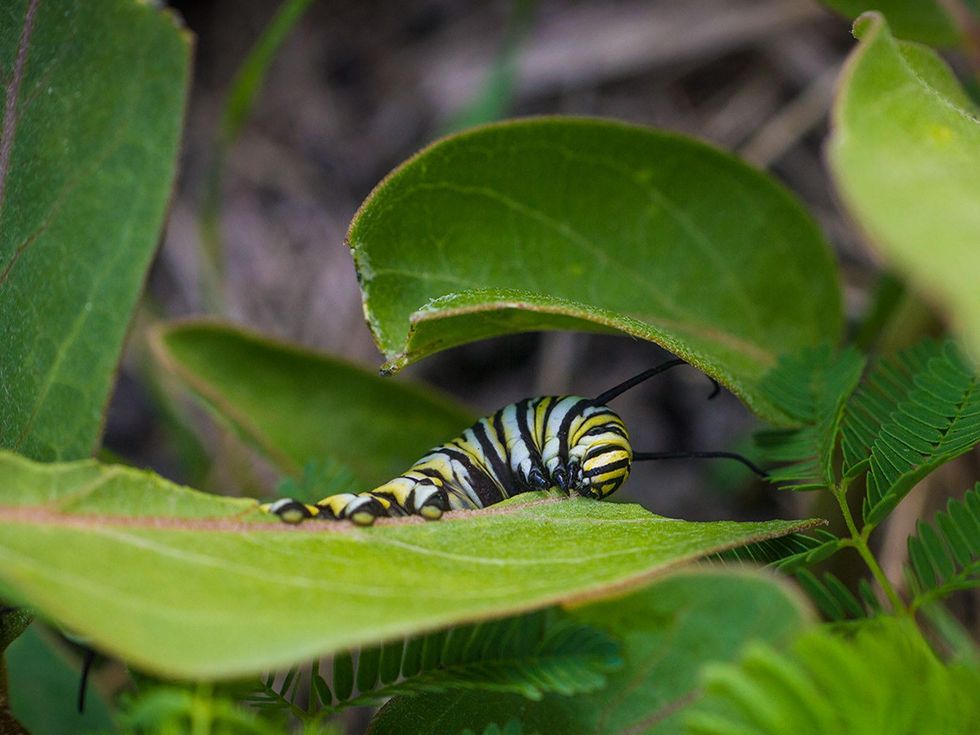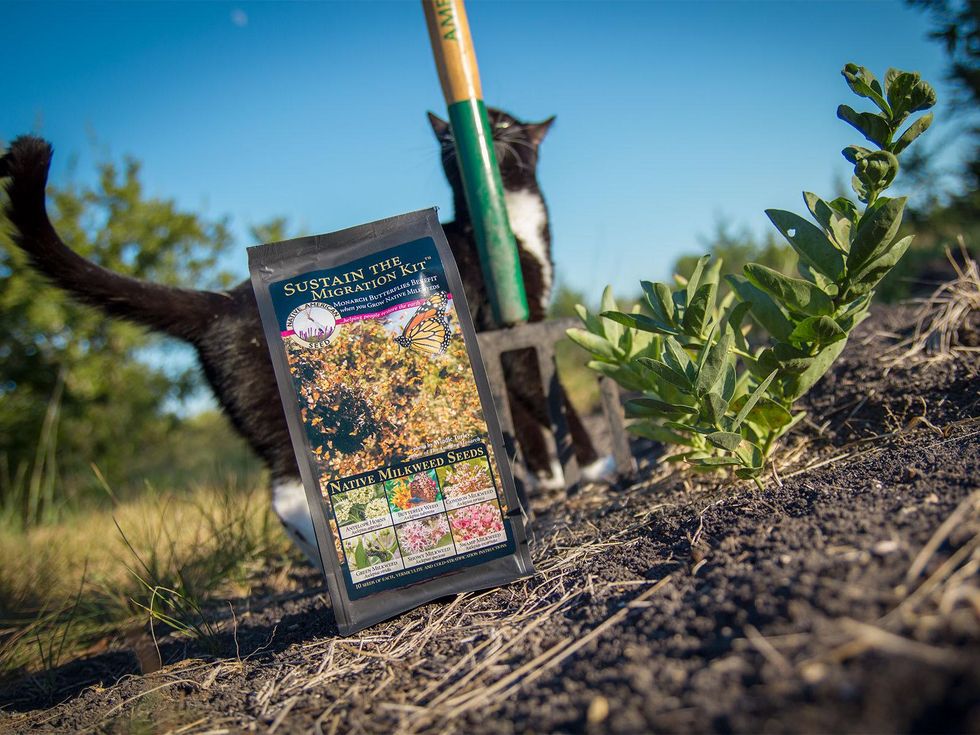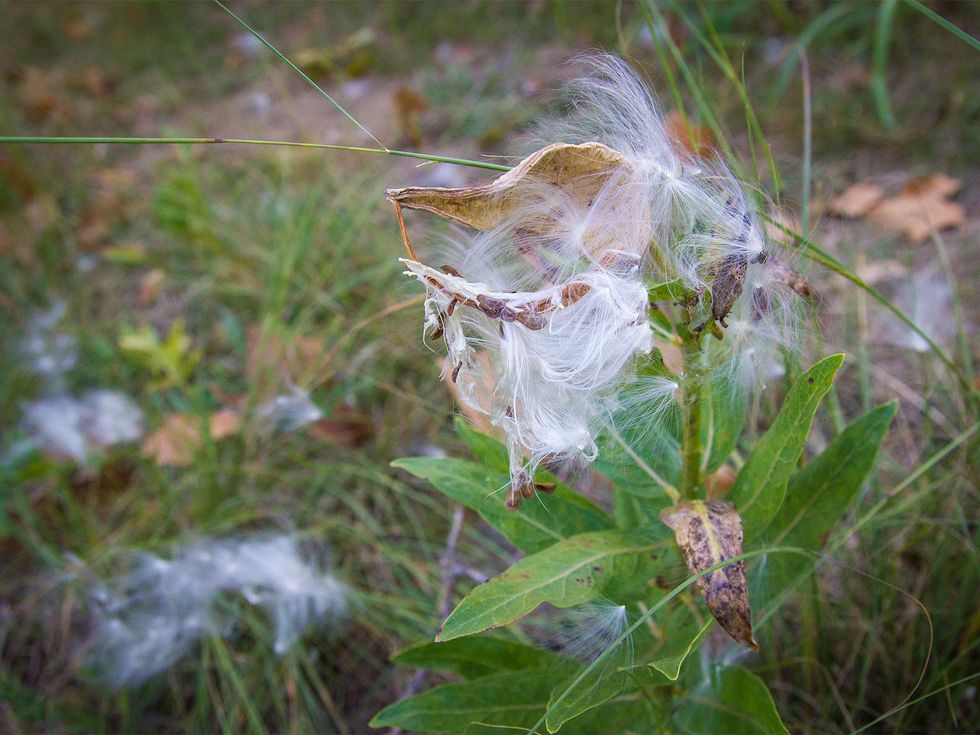The Farmer Diaries
Texas farmer plows all his efforts into saving monarch butterflies
When I was child back in the early '80s, monarch butterflies were so numerous south of Waxahachie during their annual fall migration that they seemed like the common, ordinary butterfly. With a population of about a billion in the U.S., they were everywhere, so there was nothing special about them.
But in the last 30 years, their numbers have plummeted so low that I almost never see a monarch anymore. When one does flitter into my garden, it's an occasion to drop everything and admire a rare beauty.
As with any threatened species, there's no single cause for their demise, but Wendy Caldwell of the nonprofit organization Monarch Joint Venture says industrial agriculture bears the brunt of the blame.
There's no single cause for the monarch's demise, but industrial agriculture bears the brunt of the blame.
"The primary threat to monarchs in the U.S. is the loss of breeding and migrating habitat throughout their range," she says. "Monarch caterpillars rely on milkweed as their only food source, and changing land use and land management practices have eliminated much of the milkweed from the agricultural landscape."
Industrial agriculture uses genetically engineered crops that can withstand Round-up herbicide but eradicate wildflowers such as milkweed. Monarch caterpillars eat milkweed. By killing off milkweed, farmers are killing off the monarch. Gardeners can counter that by planting milkweed and restoring native habitat.
I began planting wildflowers on my family's land about 30 years ago, but I've only recently focused my efforts on milkweed to help monarchs too. My approach to milkweed conservation began with the decision to make all milkweed on the property off-limits to the mower and the plow.
I've also tried to increase the concentration of milkweed plants on unused land by gathering their seed and planting them along fence rows, the banks of a creek and anywhere they can grow without being disturbed. But planting milkweed is not for those who expect immediate gratification, as I found out from my small experimental plots.
Several years ago, I started propagating milkweed in a few test plots by pulling out all the weeds, tilling the soil lightly and spreading a dense layer of milkweed seed over the ground before covering them with a shallow layer of soil. By spring 2014, I thought I'd seen no evidence of success until I consulted with George Cates, restoration specialist with Native American Seed in Junction, Texas.
"How do you know they failed?" Cates asked me rhetorically. "With milkweed, you may find that it sprouts, puts on one or two sets of true leaves and builds its taproot for a few seasons before it finally fills out. It could bloom the first year or it may not. It all depends on the environmental conditions."
Monarch caterpillars eat milkweed. By killing off milkweed, farmers are killing off the monarch.
Reexamining my milkweeds plots, I found several small milkweed sprouts that seemed to be doing what he described. My heart leapt up. I had jumped to a conclusion of failure because I am accustomed to garden plants. With beans, corn or carrots, I plant a seed, nature grows the seed into a plant and I pick the harvest — all in one season. It's predictable.
That predictability is no accident. It's the result of hundreds, sometimes thousands of years of human intervention that has bred into garden crops the traits we want, at the cost of the plant becoming wholly dependent on humans for survival.
In contrast, milkweed is a wild plant, evolved to handle years of drought or flooding, heat waves or cool spells, all without a helping hand from people. Because of this, it has qualities that enable it to survive in a wide range of conditions. A milkweed seed that falls to the ground can wait years for the right conditions to sprout.
"People want these wild things, these milkweeds, and so they try to put them in their domestic, controlled environments but expect the outcome to be predictable. They want the plant to behave like every other garden variety," Cates says. "They want this wild thing to behave like it's on a leash, right? But it rarely does.
"There are processes and qualities about wild species that we just don't know, or are able to understand, or even see due to our inherit notions of time and space and how fast we move through it. Milkweeds have their own reality, and we just need to change our mindset to get in sync with them."
But the milkweed code is getting cracked by researchers such as Cates and the citizen scientists who are undaunted by the plant's wildness. Among what's been found out so far about this challenging wildflower is that the right conditions must be matched to the right species of milkweed.
Among what's been found out so far about this challenging wildflower is that the right conditions must be matched to the right species of milkweed.
"Here on our farm, we have a species of native milkweed called antelope horns that grows up in a rocky area," Cates says. "We also have swamp milkweed that grows by the river and even has roots that grow out into the water. If you swap their environments and put antelope horns by the river and swamp milkweed up in the dry, rocky area, both would die."
According to Cates, there are two ways to plant milkweed. The first and preferred way is to cast the seeds on the ground in the fall and let nature takes its course. This mimics the plant's natural way of propagation.
The second way is to stratify the seed as spring approaches by placing it in cold water in the refrigerator for 24 hours. After that, you drain the seed, put it in moist vermiculate or perlite, then store in the refrigerator for another 30 to 45 days. This process imitates wintry conditions, which then makes the seed sprout within a day of being planted outdoors in the warmth of spring.
Because of native milkweed's orneriness, many monarch lovers have turned to tropical milkweed from South America to feed their beloved butterfly. It grows as easily as a sweet pea. But Cates is not a fan of the substitute.
"There's emerging science that tropical milkweed may interfere with monarch migrations, and it may be a pathway for disease in monarchs," he says.
There is also other wildlife that depends on native milkweed.
"When we get caught up on the preservation of just one species, we lose sight of the interconnectedness of all the life, at the center of which is our native species of plants," Cates says. "They are the only organisms that capture the energy of the sun and transform it into food for other native species.
"Native milkweed species provide this service for dozens of species of native invertebrates, not just monarchs."
Cates' advocacy for native milkweed has convinced me to stick with planting Texas species. Antelope horns is already established on the property. Last spring, I attempted to add diversity to my milkweed lineup by planting Native American Seed's Sustain the Migration kit, which includes common milkweed, butterfly weed, green milkweed, showy milkweed and swamp milkweed along with the vermiculite needed to stratify the seeds.
To have a serious monarch sanctuary, Cates says that I'll need to add fall-blooming wildflowers too. In the spring, milkweed feeds monarch caterpillars as several generations migrate north. But in the fall, a single super generation of adult monarchs makes the journey from Canada to Mexico without breeding.
After they wait out the winter south of the border, they return to the U.S. in the spring and start off the next generation. For this reason, they must have a steady supply of nectar wherever they go. My hope is that the 40 acres I watch over will be a welcome, life-saving stop for monarchs, full of milkweed and wildflowers that bloom throughout the year.
By helping the monarchs, I'll also create a habitat more hospitable to all pollinating insects. If one of every three bites of food we eat comes to us courtesy of pollinators, my efforts will be both a service to my fellow man and a service to the beautiful monarch butterfly that I once took for granted.




